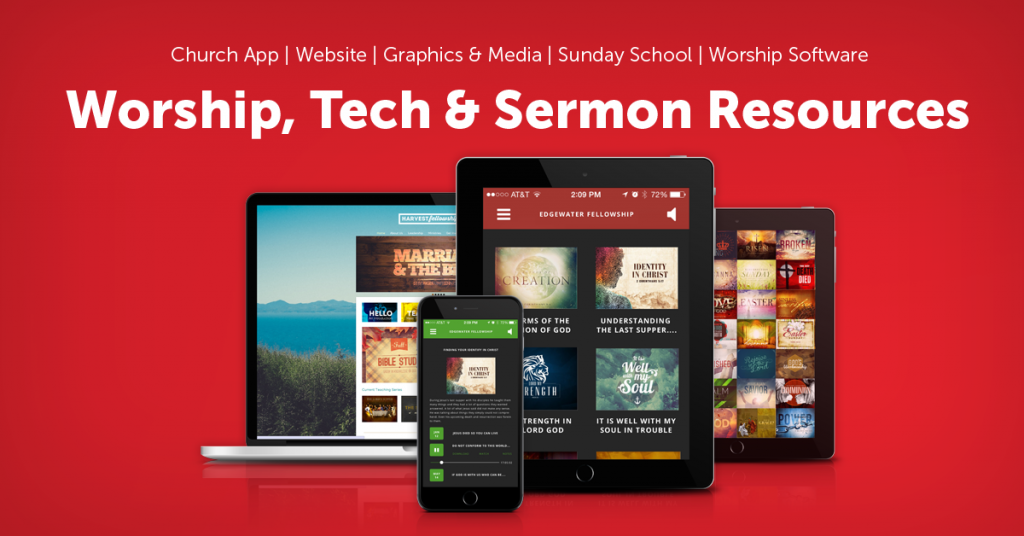The process for upgrading an older standard definition video system to a newer high definition video system might not be as cut and dry as it may seem. If done out of order, you could end up wasting time and money. Here is a guide I developed for my church as we approached the idea of transitioning to HD.
1. Cameras
Cameras are probably the most important piece of any video system. It’s important to purchase high-quality cameras that give you all the features you need. Often times you can find a camera with both an SD output and an HD output. These cameras are great for transitional periods while you wait for your entire system to be upgraded. Ultimately you’ll want to lean more in favor of HD qualities than SD, but with the cost of HD equipment dropping radically it’s not a bad idea to purchase transitional cameras that can be upgraded down the road.
2. Cables
Once your new cameras arrive, chances are you’ll have to run new lines to your cameras from your control booth. If you are lucky enough to have purchased HD-SDI gear, be sure to run quad shield coax for your new camera lines. Also, with the rise of network controlled equipment, its a good idea to run at least one line of catVI or catVII even if you don’t have immediate plans for it.
3. Sources
Once your lines have been run, go through all your secondary sources such as DVD players, computers, and blu-ray players and be sure that they offer an HD output. In some cases, this may mean purchasing new equipment that is comparable with your HD format. It’s best to attempt to find gear that can natively output the correct resolution with the proper cables instead of running through converters at this stage.
4. Switcher
Up to this point, these new integrations can be spaced out considerably. Once the switcher is in place, it’s good to not let too much time pass to the completion of the project. Find the right HD switcher for your church’s needs. Sometimes that’s the cheapest one, sometimes it’s not. We went with the Blackmagic ATEM TV studio based mostly on price and have found out that there are a bunch of other accessories we need to actually make it work during our transition.
5. Routers
Routing your video signal will mostly depend on what goals you’re attempting to accomplish. My church used to run Pro Presenter separately from the video mixer, which meant we had to deal with a cumbersome A/V matrix to route the signal where we wanted it. With our new system, we are using Pro Presenter as a source, which will eliminate the need for the matrix because every output device will be using the same feed. In doing this, all we needed is an HD video distribution amplifier.
6. Converters
If you are recording your service to DVD, it’s impossible to get out of needing to use converters. Due to the HDMI protocol, no consumer electronics have an HDMI input that will burn right to disc. You must downconvert from HDMI to either s-video (which is better) or composite video. That being said, there is no option I’ve found cheaper than about $200 to get a quality converter to go from HD to SD. Trust me, it’s worth spending money on this one.
7. Recording Media
There are other ways of getting your services onto DVD without using converters, but nothing as quick as using converters. Recording to hard drives has been the industry standard now in the HD world for a while, but it will add a few steps in the DVD creation process. The god news is, it forces you to author the DVD when it’s being done this way. You can create custom menus, backgrounds, and chapters based on your own preferences. The bad news is, it will take some time for the media to render down to a usable format for DVD. What used to take 5 minutes to finalize a disc now could take several hours. I have been able to find an HD-SDI DVD recorder, but it was ridiculously expensive. Ultimately we went with converters to our existing DVD burners.
8. Cables
This is on here twice because if I had to run new lines to your cameras, then there is a good chance you might need to run new lines to your screens. It’s better to run higher quality runs than lower quality. For us, that means going with CAT VI instead of CAT V. Also, we have a few runs that are longer than usual, and we need the CAT VI to get that little boost in cable distance.
9. Main Projectors
If you’ve bought a projector in the past ten years, then there is a real good chance it already can output in HD. Even if it only have a DVI input, it can still potentially display 1080i. Check each of your projectors before purchasing any new equipment. If you haven’t bought a projector recently than before you look at the price of the projector, look at the price of the replacement lamp first. Often times the lamp is the most expensive part of the projector. I try to anticipate changing lamps once a year, that keeps my image clear and my projectors clean (change the filter while you’re up there).
10. Secondary Screens
We have two big flat screen TV’s mounted in our foyer that are run with coax. These two screens will be the last piece of our upgrade. Ideally I would have run the lines for these screens at the same time as when I ran the lines for the main projectors. We are using catVI to carry the signal and running through some JTech converters to HDMI. These JTechs have been amazing converters for us, and I highly recommend them both as an extender for the camera and to your screens. Also, they were the only converter we found that was compatible with the ATEM TV studio.
Has your church made the switch yet? Tell us about it in the comments.

Tommy Scully is a technology consultant for churches nationwide working with audio, video, live streaming, and data systems. Having graduated from the Institute of Audio Research with a 4.0 GPA, his passion for audio led him to develop his own Church Audio Training Program. Tommy is available to speak, optimize, or consult with your church


